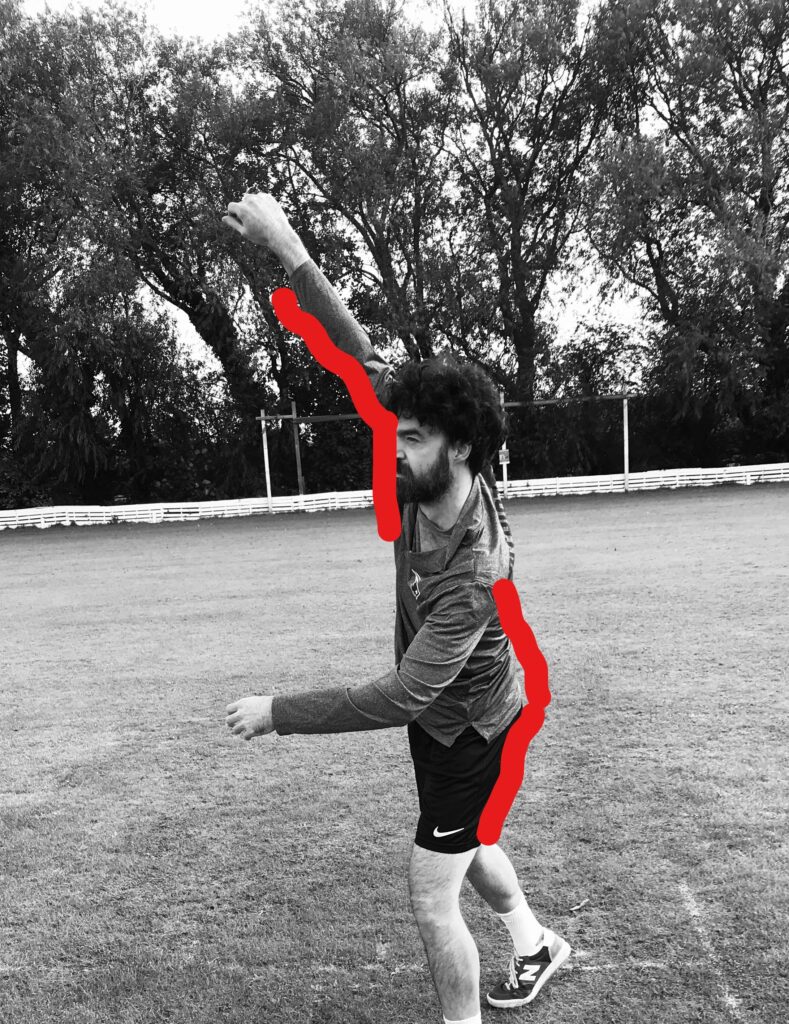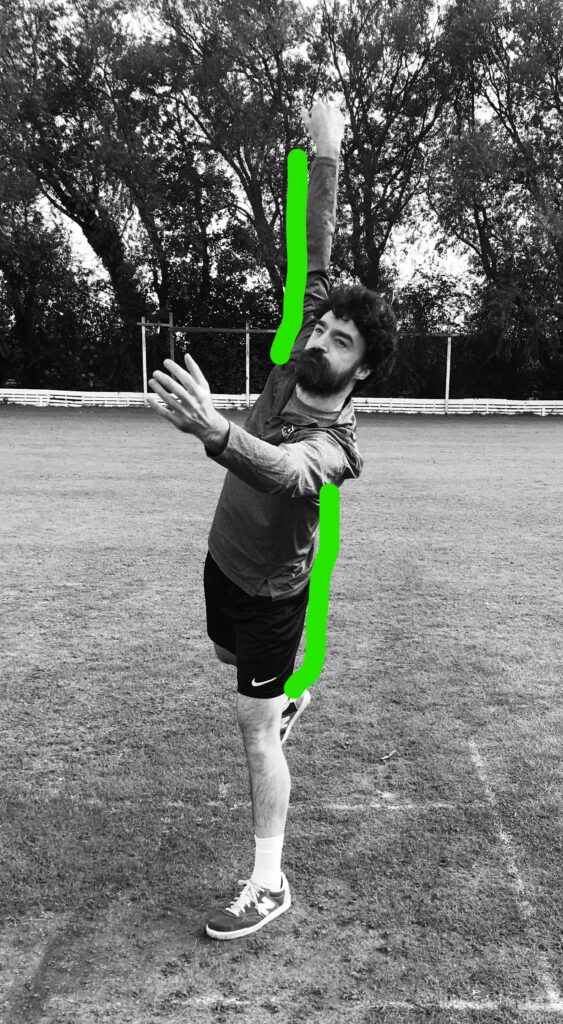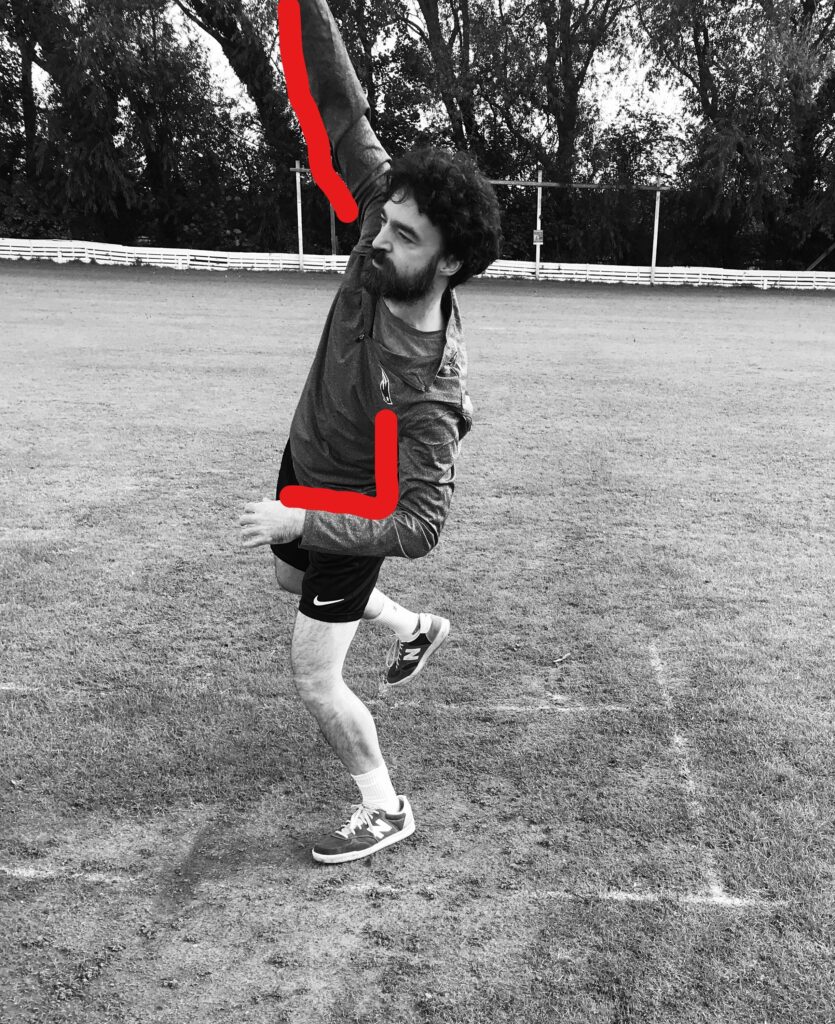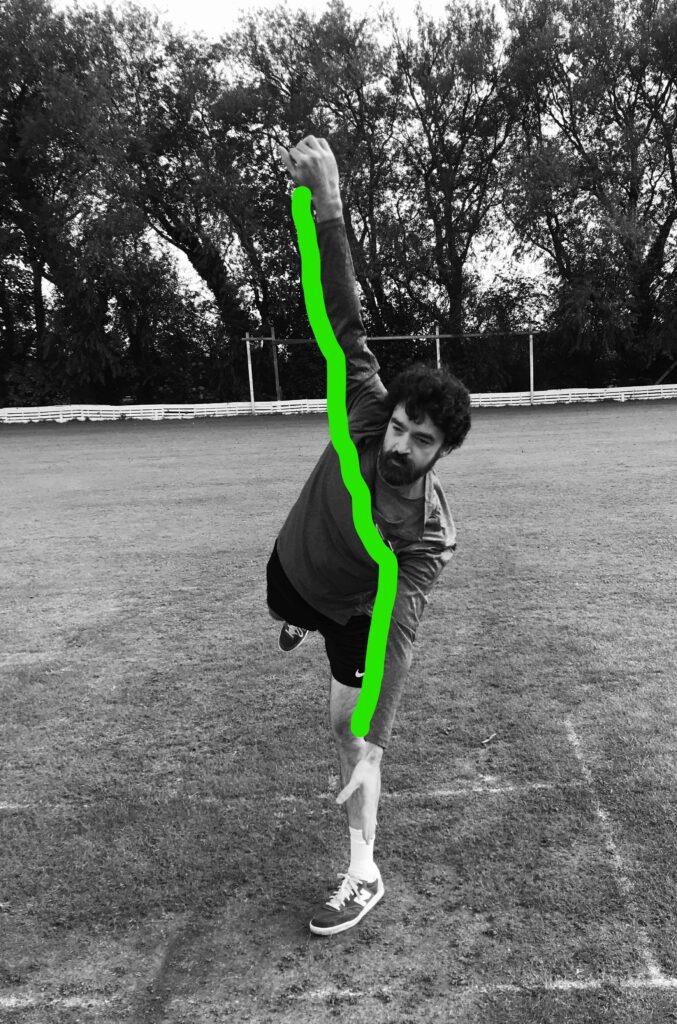Movement Lesson and Leg Spin
During this summer’s #Raisethebat Test series, Sky Sports have done an excellent Coaches Clinic feature during lunch. The panel reviewed and offered tips for improvement to young cricketers who submitted videos of their performance. Inevitably lots of clips from perspective leg spinners were sent in with Shane Warne on the panel – one of the greatest ever cricketers and successful IPL coach. The two most frequent observations from Warne highlights how these young cricketers would benefit from some Movement Lesson sessions. Firstly, the delivery shoulder of a lot of the young players needed to be higher; secondly that they needed a stronger lead arm. So how can Movement Lesson help?
Using Movement Lesson to Initiate or Improve a Pelvic Strike
As you can see from the shots below, the bowler in the picture on the left has a rounded pelvis and sacrum. The bowler’s delivery arm is at a 3/4 action, which results losing trajectory, the ball not being in the air for as long and the loss of spin and bounce. There will also be less disguise in delivery because more of the ball is visible to the batsman.

No Pelvic Strike 
With a Pelvic Strike
Whereas the picture on the right has a pelvic strike with a straight pelvis and spine. The bowler now has a higher release point as the shoulder comes higher. As a result, the trajectory of the ball is higher, which changes the batters eyeline, and the delivery will have added spin and bounce.
Movement Lesson sessions can focus on initiating or making the pelvic strike more efficient. See the link below for sessions that can be used to improve this:
https://www.babymovementlesson.com/index.php/adult-classes/adult-pelvis
Synchronising the Arms with Movement Lesson
The lead arm plays a key role in a leg spin delivery. It acts as a radar that directs where the ball is going to go. The bowler will be much more consistent and accurate with their delivery if this arm is synchronised with the delivery arm. Whilst there will also be a more effective weight transfer from back leg to front that helps reduce the strain on the bowling arm, reducing injury risk. Ultimately, the two arms should work together.
As you can see from the pictures below, the picture on the left does not have a strong lead arm. This will put more strain on the delivery arm and will effect where the ball is likely to pitch. Whereas, the picture on the right has a strong lead arm that leads the delivery arm through; the arms are synchronised. Consequently, greater rotation is observed in the hips, spine and shoulders, resulting in a more fluid, efficient action.

Weak lead arm 
Synchronised arms
Movement lesson teaches the body how different systems can move together. As a result, the arms can be synchronised to move not just with each other, but with the hips, knees and feet too, through the use of rotation to facilitate counter-balance. For Movement Lesson sessions on how to integrate the arms with each other as well as hips and legs see:
https://www.babymovementlesson.com/index.php/adult-classes/adult-torso
For details of a free Movement Lesson on how to work on Pelvic Strike and integrate the arms please add your email details here.
Actions of Three Elite Leg Spinners
Below are photos of three of the top leg spin bowlers in the world during their different phases of delivery. As you can see, they all show a pelvic strike, a high shoulder and release point, as well as an integrated lead and delivery arm. Although the lead arm shape differs slightly, they are all tight to the body at release and leads the delivery arm through.
Adil Rashid
Rashid Khan
Yasir Shah
Like Shane Warne, Rashid Khan’s arm is particularly tight to his body. In fact, Khan’s delivery is remarkably similar to Warne’s. His approach is quicker, but the load, synchronisation of the arms, release point and follow through are almost identical. This might explain why he is currently the number 1 ranked T20 Bowler in the world.
There is only one way to finish this post, we return to the Sky Sport analyst at the top of the post and the “ball of the century”. Shane, we wish you were English:
About the author